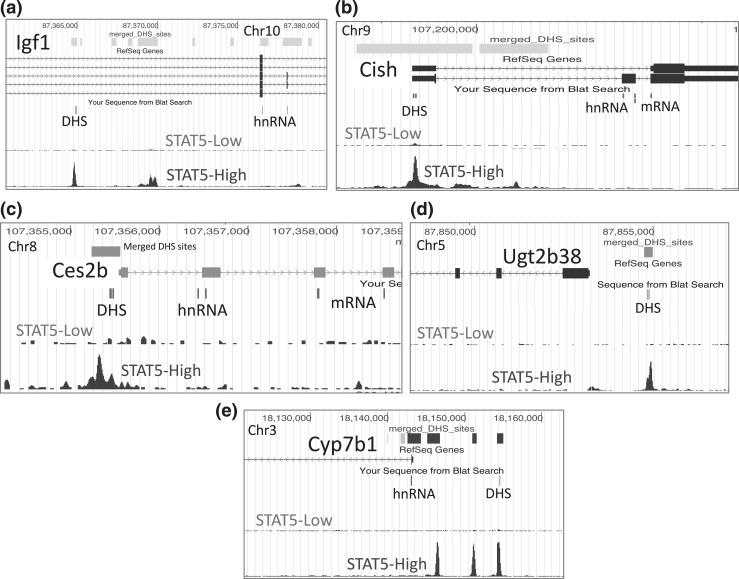Figure 3.
(a–e) Mouse genome browser screenshots showing for each of the five indicated genes (a–e) specific genomic regions assayed for hnRNA, mRNA, and DHS, as marked in the track “Sequence from Blat Search.” Primary RNA transcripts (hnRNA) were quantified using primer pairs that span an exon–intron (or an intron–exon) junction. Primers used to quantify mature (spliced) mRNAs were targeted to adjacent exons separated by an intron. Open chromatin regions were those previously identified as DHS (merged DHS sites, top track) (51) and are color coded to indicate the sex bias of chromatin accessibility: gray indicates no sex bias; blue indicates male bias, with darker shades of blue used to indicate greater/more significant male bias. The specific open chromatin regions interrogated by qPCR are marked DHS. These DHS all overlap regions of STAT5 binding in STAT5-high male mouse liver identified previously by ChIP-seq (38), as shown in the bottom track. STAT5 DNA binding is greatly reduced in mice euthanized when liver STAT5 activity is low [compare with Fig. 4(a)] (STAT5-low track).

